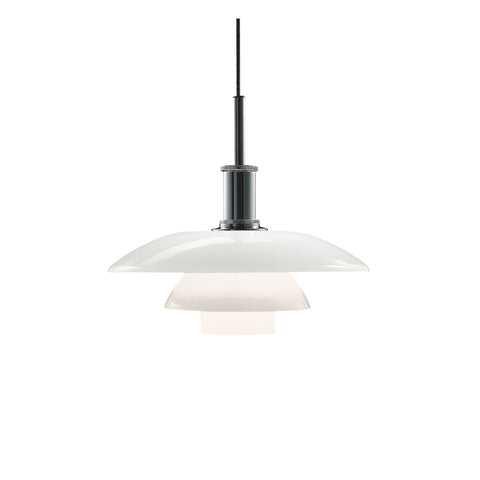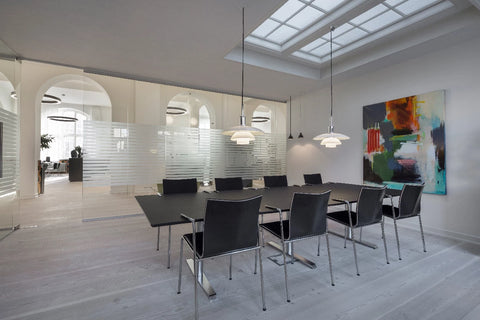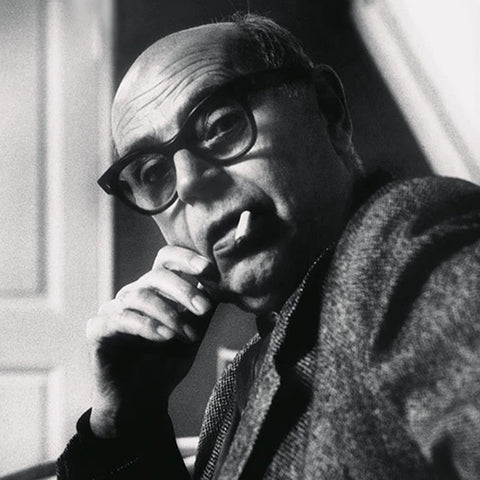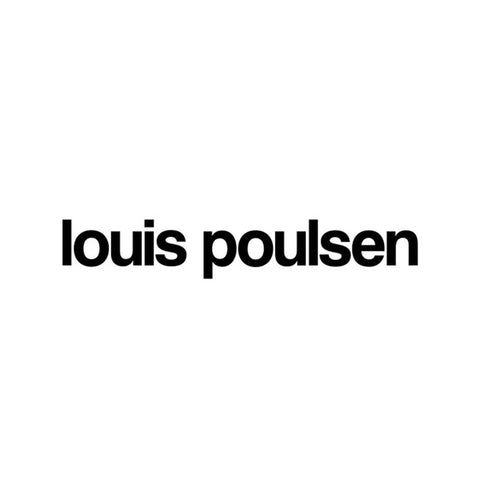


PH 4½-4 Glass Pendant
The fixture is designed based on the principle of a reflective three-shade system, which directs the majority of the light downwards. The shades are made of hand blown opal three-layer glass, which is glossy on top and sandblasted matte on the underside, giving a soft and uniform light distribution.
Poul Henningsen developed the three-shade lighting system between 1925 and 1926, debuting it at a Paris exhibition. He collaborated with Louis Poulsen until his death in 1967, focusing on glare-free lighting that directed light where needed and created soft shadows using incandescent bulbs. The PH 4½-4 Glass Pendant is one of 19 versions in this system, part of a collection that has produced around 1,000 models, including table, floor, wall lamps, and chandeliers popular in the 1930s. The shades, initially made of metal with painted undersides for various light effects, later incorporated glass to enhance room illumination. Henningsen’s scientific approach utilized the logarithmic spiral for even light distribution, minimizing glare and shadow. Each model's number reflects shade size, with the PH 4½-4 featuring a 45 cm top shade and lower shades from the 4/4 model to accommodate lower hanging heights. The current version was introduced in 1980.
This product doesn't have any reviews yet. Be the first to bring iconic design into your home and share your thoughts!
Diameter: 17.7"
Height: 16.1"
Cable Length: 144"
Materials:
Shades: Handblown white opal glass
Suspension: High lustre chrome plated, extruded aluminum
1 x 22W LED A21 Medium
Canopy: White
Cord Type: 3-Conductor, 18 AWG Black PVC Power Cord
Dry Location
cULus Listed
Most Louis Poulsen lighting fixtures come with a 5-year warranty. However, specific products have different coverage:
- Portable fixtures (such as table and floor lamps): 2-year warranty
- Separately purchased components (like replacement parts): 2-year warranty
Established in 1874 as a lighting manufacturer, Louis Poulsen has become one of the world's leading producers of lighting. This success is attributed to collaborations with renowned designers and architects like Arne Jacobsen, Øivind Slaatto, Poul Henningsen, and Verner Panton.







